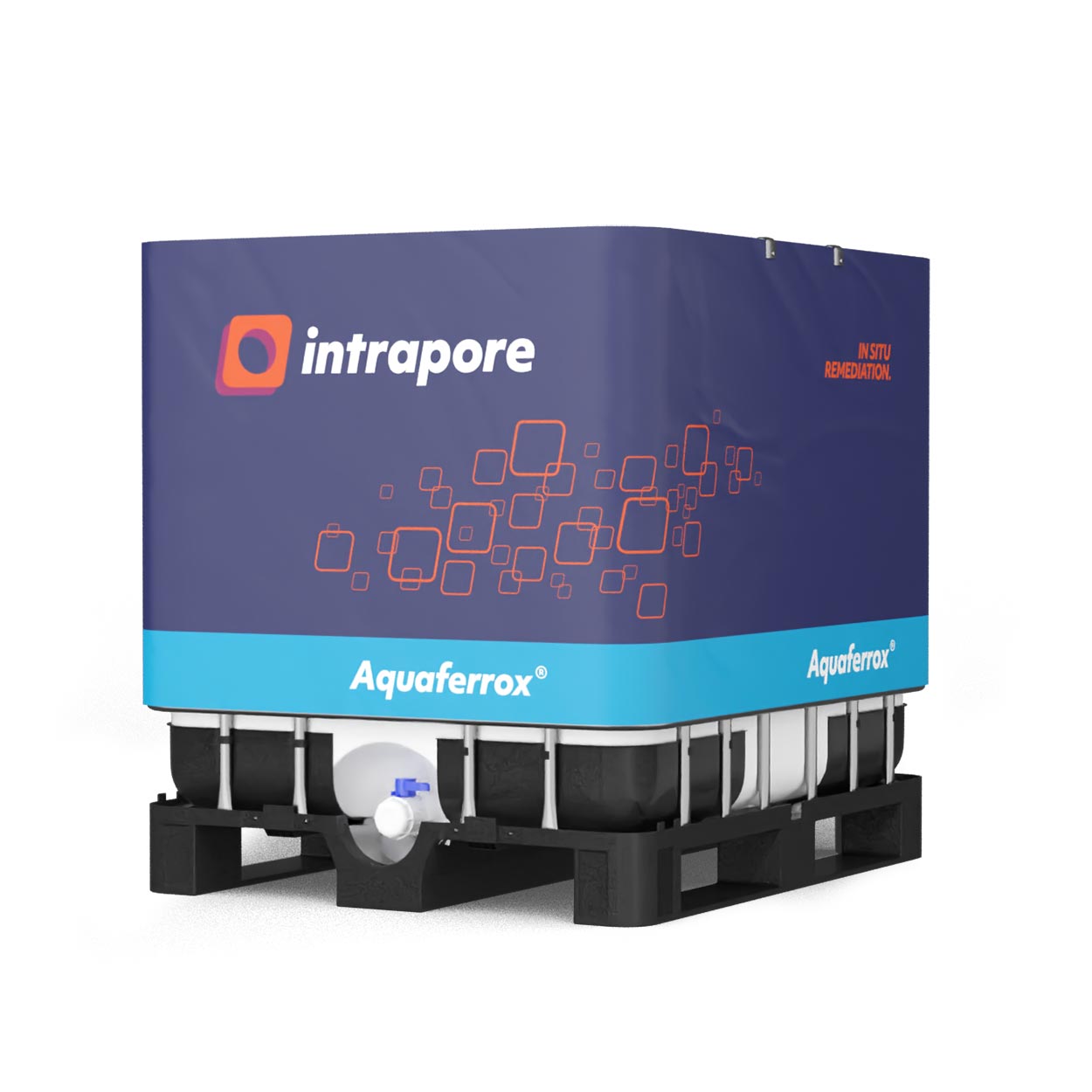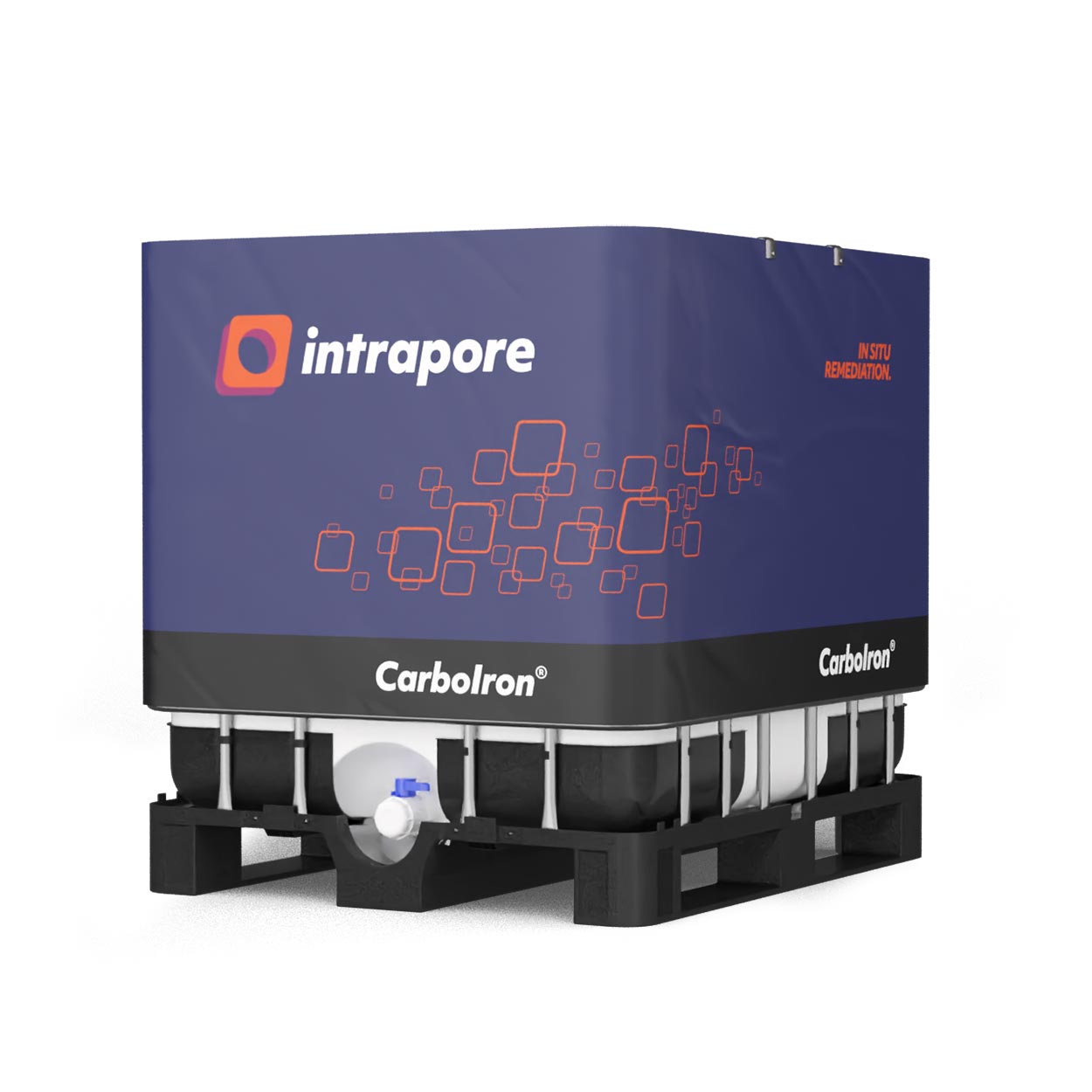PFAS adsorbent for unsaturated soil zones
PFAS are highly mobile in groundwater systems, due to their high solubility in water. Typically, a large remediation effort is made to contain and treat the vast PFAS plumes, which have formed due to this effect.This is where Fluorolock® comes into play: We developed a clay mineral-based, microscale adsorber which is specifically designed for the treatment of water-unsaturated PFAS infiltrations zones above the groundwater surface.
Limit PFAS leaching before they reach groundwater
With Fluorolock®, PFAS can be effectively adsorbed, immobilized and hence confined within the water-unsaturated zone before being leached into the groundwater accompanied by their distinct fast spreading through the subsurface. A formation of PFAS-plumes can be prevented or interrupted, and remediation efforts can be targeted to small, localized zones, rather than to widespread plumes.
Fluorolock®
- offers irreversible adsorption of long- and short-chain PFAS for long-term immobilization within the unsaturated zone
- results in long-term confinement of the adsorbed PFAS inventory in soils due to robustness of Fluorolock® to periodic drying and re-wetting
- grants ecotoxicological safety, and has been independently tested and verified by a German university
- is injectable as a liquid suspension with common direct push systems
Properties of Fluorolock®
| Patents | DE 20 2019 004 774.3
developed by Intrapore |
|---|---|
| Specific surface Area | ~ 270 m²/g |
| Particle size | ~ 1.5 μm |
| Injection concentration | from 10 to 50 g/L |
| Components |
|
Adsorption of long- and short-chained PFAS
The polymers at the Fluorolock® particle surface provide distinct hydrophobic interactions resulting in the adsorption of long-chain PFAS, e.g., PFOS. Fluorolock® yields adsorption capacities as high as observed for high-performance ACs specifically functionalized for PFAS adsorption. Due to its pH-independent permanent positive surface charge, Fluorolock® facilitates also the adsorption of short-chain anionic PFAS -such as PFBS- due to electrostatic attraction. The exponential rise in PFAS adsorption with increasing PFAS concentration renders Fluorolock® as perfect agent for application in the direct vicinity of PFAS-contaminated sources (Figure 1).
Almost irreversible PFAS immobilization
The major part of PFAS is irreversibly bound to Fluorolock®. This has been confirmed in lab tests: although rigid conditions were repeatedly applied to force a re-mobilization of initially adsorbed PFAS from Fluorolock® (maximum chemical gradients; 48 h shaking). After three desorption steps, where PFAS-loaded Fluorolock® was exposed each time to a PFAS-free solution, in sum ~7% PFOS, ~11% PFBS, ~17% PFOA and ~65% of the initially adsorbed PFHxS were re-mobilized under such strongly desorption-forcing conditions (Figure 2). Alike conditions (shaking, strong chemical gradients) are not expected to occur in nature but rather resemble a stress test for the PFAS-Fluorolock®-binding.
Despite repeated drying of Fluorolock®, no PFAS are additionally released from Fluorolock®. This makes Fluorolock® perfectly applicable in water-unsaturated soils, which are common objects to periodic drying and re-wetting.
Applied within the unsaturated soil zone
Due to its colloidal size, soils can be amended with Fluorolock® by the injection of liquid Fluorolock® suspensions directly into soils. The injected Fluorolock® particles will move through the porous media over a certain distance and finally adhere to the soil pore walls. There, the immobile Fluorolock® particles will adsorb and immobilize the PFAS molecules, which migrate through the soils via percolating soil solution.
In a soil column experiment with four independent replicates, PFAS-containing groundwater (taken from a former military airport) was percolated under water-saturated conditions through soils (taken from the same site). The soil was amended with Fluorolock® or remained unamended (control soil). The presence of Fluorolock® resulted in a distinct immobilization of PFAS within the soil, revealed by effluent PFAS concentrations below the detection limits (Figure 3). Given the applied percolation rate o 2 pore volumes d-1, a contact time of 12 h was sufficient to achieve the observed immobilization. Contrary, unamended soil did not (or only insufficiently) retain the monitored PFAS.
Consequently, Fluorolock® instantly and sustainably immobilized PFAS, which were initially highly abundant in the mobile phase (e.g., groundwater).
Environmentally safe and tested
Fluorolock® proved its environmental compatibility in standardized ecotoxicological assays with plants and multicellular animals (earthworms). An independent German university and experts on environmental matters support an application of Fluorolock® to PFAS-contaminated soils.
Get in touch with us
without obligations
Just use the form below and we will be happy to get back in touch with you. If you have a question directly, you can also reach us by phone at +49 201 858 958-0
discover more
intrapore® products
Intrasorp®
On a sustainable basis: Intrasorp® can be precisely adapted to the different adsorption behaviour of the respective pollutants. MOHCs, BTEX, PAH and many other organic pollutants can thus be quickly and permanently immobilised and removed from the downstream groundwater flow.Rapid and sustained in situ immobilzation of organic contaminants
Aquaferrox®
Effective remediation of groundwater: Aquaferrox® enables the permanent binding of heavy metals and metalloids in groundwater. The dissolved ions are safely immobilised by adsorption. Aquaferrox® is characterised by high adsorption capacity, thermodynamic stability and ecotoxicological safety. Easy to apply with standard direct-push systems.Unique and patented in situ immobilization of heavy metals
CarboIron®
CarboIron® is the sustainable and exceptionally effective alternative to conventional iron – and this applies with equal regard to mobility during injection, sustainable reactivity and effectiveness. Organic halogen pollutants such as PCE and TCE are effectively and permanently immobilised, being fully degraded into ethene and ethane.
For the degradation of halogenated pollutants
Intraplex®
PFAS remediation places the highest demands on the in situ materials. With Intraplex® activated carbon, Intrapore offers a colloidally stabilized suspension that is injected directly into the contaminated aquifer, where it rapidly and permanently immobilizes PFAS. Rapid and sustained in situ PFAS immobilization









